Grouting in civil construction
Grouting is a construction technique used to fill the gaps or voids between tiles, bricks or other materials to create a strong, durable and visually appealing surface. It involves applying a dense, liquid material called grout, which is usually a mixture of cement, water and sometimes sand or other additives.
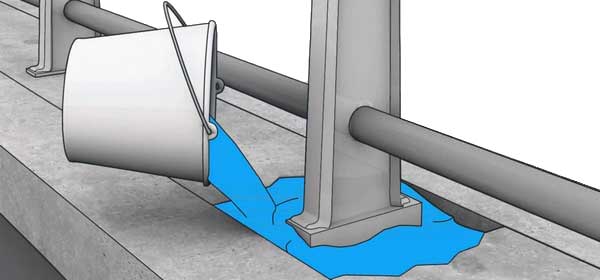
The primary purpose of grouting is to provide stability and support to the tiles or stones, preventing them from shifting or becoming loose. Additionally, grout helps to seal the gaps between tiles, making the surface more resistant to water penetration and reducing the risk of damage caused by moisture.
The grouting process typically involves preparing the grout material, injecting it into the void or gap using specialized equipment such as grout pumps, and allowing it to cure or harden. The specific techniques and procedures may vary depending on the project requirements and the type of grouting being performed.
Benefits of grouting
Grouting offers several advantages in construction and civil engineering projects. Below are some of the key benefits of grouting:
Structural support: Grouting can provide structural support by filling voids or fractures in rock, concrete structures or masonry. The injected grout acts as a binder, strengthening the existing structure and preventing further deterioration. It is often used in the repair and strengthening of buildings, bridges, dams and other civil engineering structures.
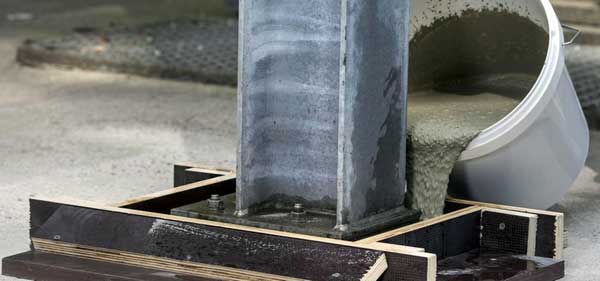
Soil stabilisation: Grouting is often used to stabilise soil and improve its engineering properties. By injecting grout into the soil, it can fill voids, strengthen loose or weak soil and increase the overall stability of the soil mass. This is especially useful in construction projects where stable soil is needed to build foundations, tunnels or retaining walls.
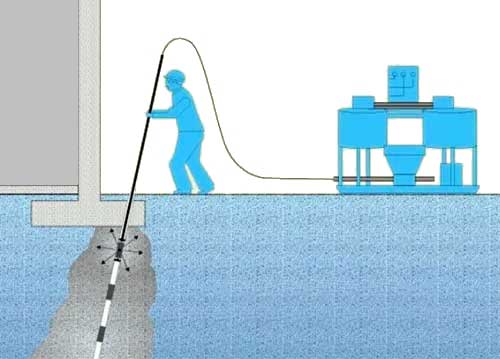
Water control and sealing: Grouting is an effective method of controlling water flow and sealing leaks. Injecting grout into cracks, joints or porous materials creates a barrier that prevents water from infiltrating or escaping. This is widely used in underground structures, such as tunnels, mines and basements, as well as in the rehabilitation of dams and reservoirs.
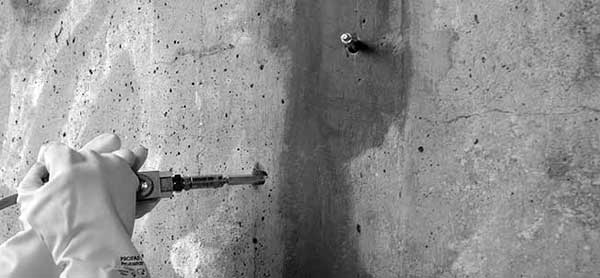
Ground improvement: Grouting can increase bearing capacity and improve the mechanical properties of soil. It can compact loose soil, increase shear strength and reduce settlement. This is beneficial in areas with poor soil conditions or when the soil needs to be improved to carry heavy loads, such as when constructing highways, airports or industrial facilities.
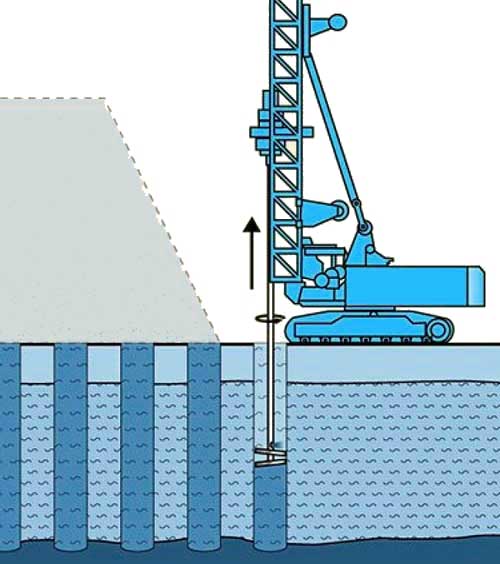
Spill containment: Grouting is an effective method to contain leaks in underground structures or containment systems. By injecting grout around pipelines, storage tanks or underground storage facilities, it can seal potential leakage paths and prevent hazardous substances or contaminants from entering the environment.
Minimises vibrations: In some cases, grout can be used to minimise vibrations caused by dynamic loads or machinery. Injecting grout under vibrating structures increases their mass and damping properties, reducing the transmission of vibrations to surrounding areas.
Foundation and underpinning: When the ground under a structure is unstable or subsiding, grouting can be used to strengthen the ground or provide additional support. This technique is known as underpinning and is often used to stabilise foundations.
Versatility: Grouting can be applied to different materials and in different construction contexts. It is suitable for concrete, masonry, rock and soil, making it a versatile technique used in a wide range of projects, including buildings, infrastructure, tunnels and underground structures.
Types of grouting materials
Different materials are used in grouting, depending on the specific application and desired results. Below are different materials commonly used for grouting:
Cementitious grouts: Cementitious grouts consist of a mixture of cement, water and sometimes additives such as sand, fly ash or admixtures. Portland cement is the most commonly used cementitious grout. Cementitious grouts are known for their strength, durability and ability to effectively penetrate and fill cavities. They are used for a wide range of applications, including soil stabilisation, structural repairs, sealing cracks and creating waterproof barriers.
Chemical grouts: Chemical grouts are composed of chemicals that undergo a chemical reaction to solidify or expand after injection. These grouts have a low viscosity, allowing them to penetrate fine cracks and fissures. Chemical grouts include polyurethane grouts, acrylic grouts and epoxy grouts. They are often used for crack injection, soil consolidation and cavity filling.
Bentonite grouting: Bentonite grout uses bentonite, a type of clay, as its main constituent. Bentonite grout usually consists of bentonite powder mixed with water to form a viscous slurry. Bentonite grout has excellent sealing properties and is often used for groundwater control, such as in diaphragm walls, partitions or trench gutters.
Resin joints: Resin joints are composed of epoxy or polyurethane resins. These grouts are usually two-component systems that are mixed just before injection. Resin grouts have a low viscosity and can penetrate fine cracks and voids. They have high adhesion and compressive strength, making them suitable for structural repairs, injection of cracks and soil stabilisation.
Microfine cement mortar: Microfine cement mortar consists of very fine cement particles that can penetrate through small fractures and crevices. This mortar is usually mixed with water to create a suspension that can be injected into the soil. Microfine cement grout is used for soil injection, soil improvement and rock grouting.
Silicate Grouts: Silicate grouts use sodium silicate or potassium silicate as the main ingredient. These grouts react with calcium ions in the soil to form a solid gel-like material. Silicate grouts are used for soil stabilisation, filling voids and improving soil conditions.
The choice of grouting material depends on factors such as project requirements, soil conditions, accessibility, the desired distribution of the grouting material and the properties of the grouting material. It is important to consult experienced grouting professionals to determine the most appropriate injection method for a specific application.

Types of grouting methods
Different grouting methods are used in construction and geotechnical engineering to address specific needs and challenges. Below are different grouting methods commonly used:
Injection joints: In this method, grout is injected under pressure into cracks, cavities or joints in structures or soil. It is usually used for sealing leaks, filling cavities or repairing damaged structures. Different types of grout material can be used in injection grouting, such as cement-based grout, chemical grout or resin-based grout, depending on the specific application.
Permeation grouting: Permeation grouting is used to improve the strength and stability of soil or rock formations. Low-viscosity grout is injected into the soil to fill voids and consolidate the surrounding material. The grout spreads through permeable zones, improves their engineering properties and reduces water permeability. Cementitious or chemical grouts are usually used in permeation grouting.
Compaction grouting: Compaction grouting is a technique used to increase the bearing capacity of soils and reduce settlement. High-strength grout is injected into the soil under high pressure, displacing and compacting the surrounding soil. This method is effective for stabilising loose or weak soils and is often used under structures or to reduce sinkholes.
Curtain grouting: Curtain grouting is used to create a watertight barrier in the ground, especially in cases where groundwater control or partitions are required. The grout is injected into the ground along a predetermined path to form an impermeable barrier. Bentonite or cement is usually used for curtain walls.
Jet grouting: Jet grouting is a versatile method used to create structural elements in the ground or stabilise the soil. This involves injecting a liquid grout under high pressure into the soil while simultaneously rotating and retracting the injection rod. The grout mixes with the in-situ soil and forms columns or panels of soil-cement. Jet grouting is effective for creating partitions, improving weak soils or forming underground structural elements.
Compaction displacement grouting: This method is a combination of compaction grout and displacement grout. Under high pressure, grout is injected into the soil to compact and stabilise it while moving it radially outwards. This technique is used to improve loose or compressible soils, reduce settlement and increase bearing capacity.
Grouting encompasses a wide range of materials, methods and applications that play an essential role in construction and geotechnical engineering. As construction and geotechnical engineering continue to evolve, advances in grouting materials, methods and applications will drive innovation and open up new possibilities for solving complex engineering challenges.
